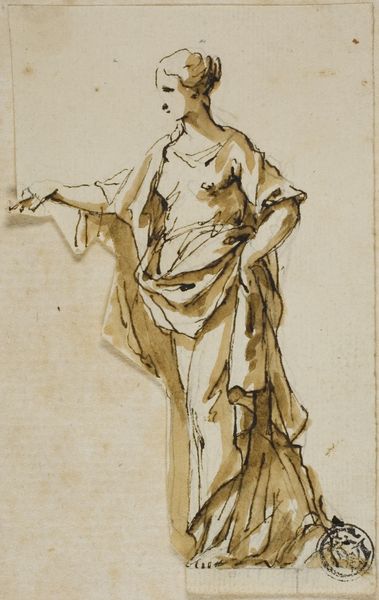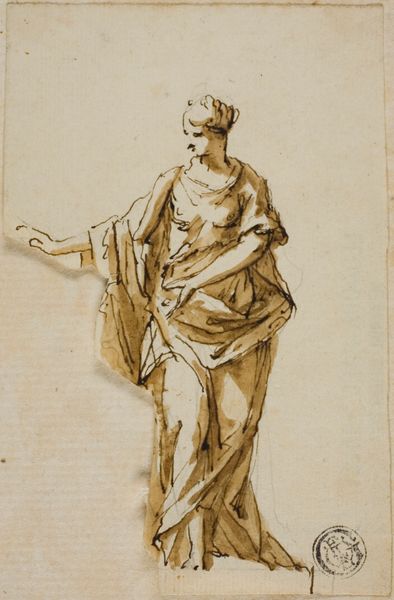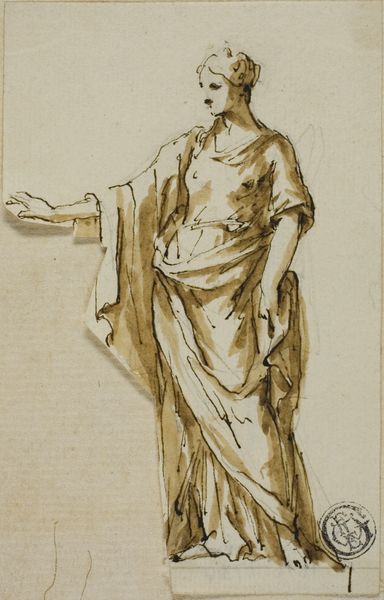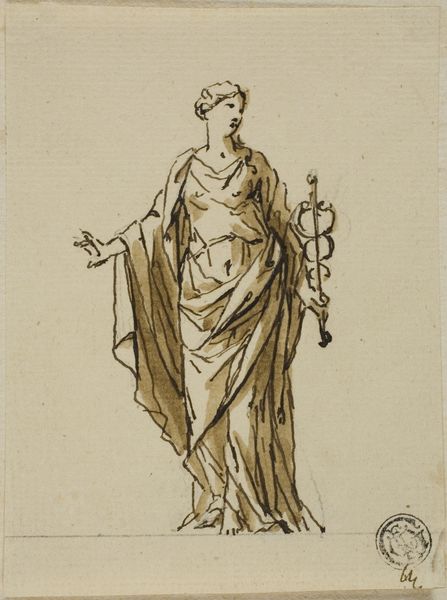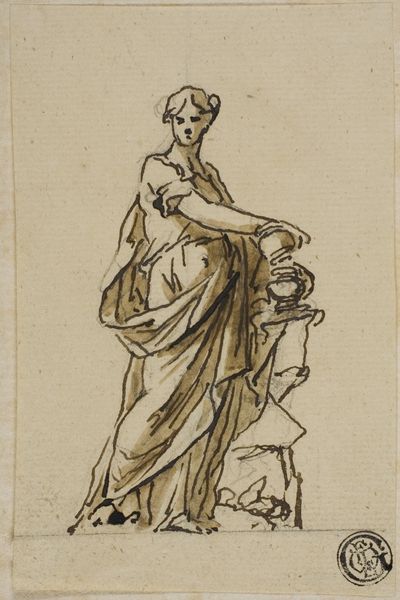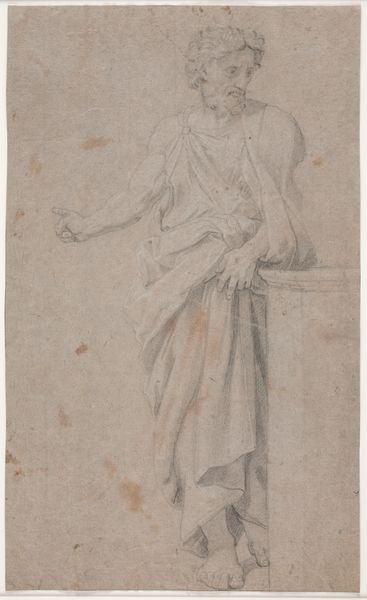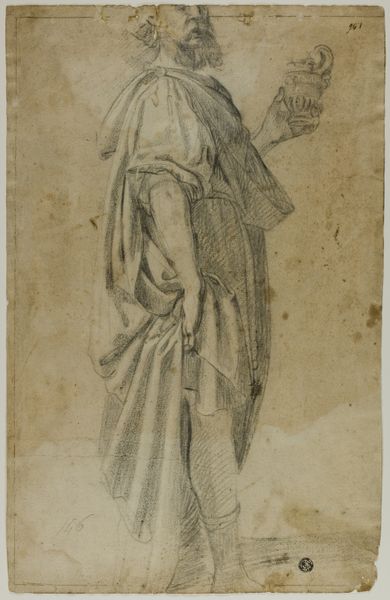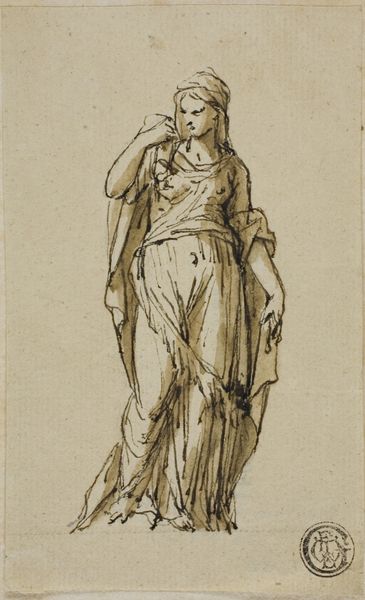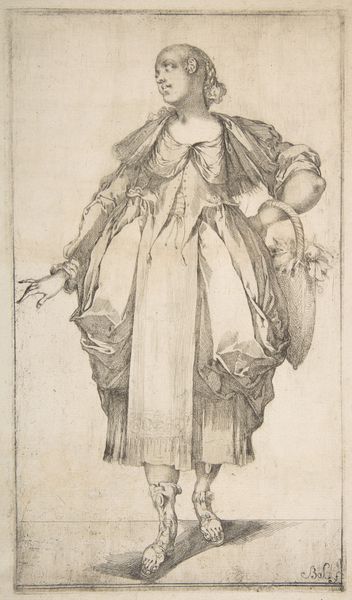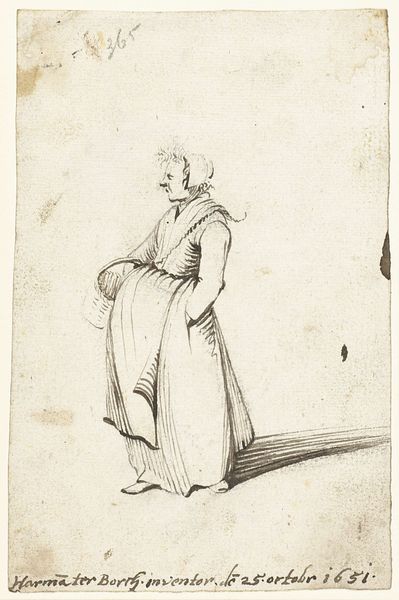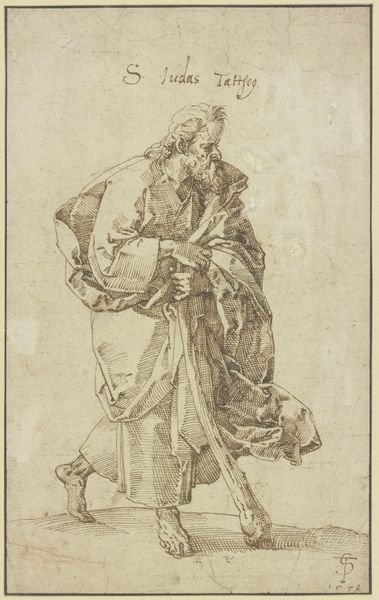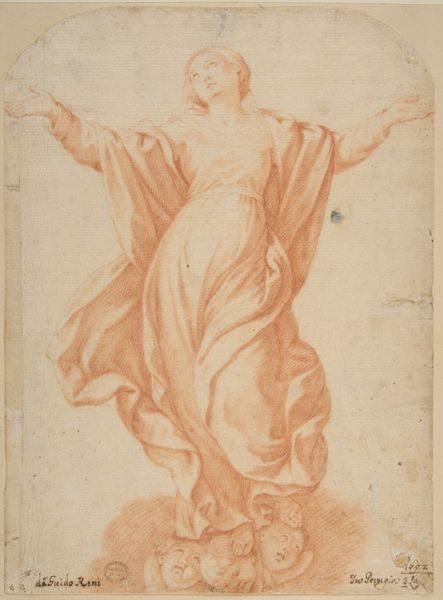
drawing, paper, ink, graphite, pen
#
portrait
#
drawing
#
baroque
#
landscape
#
figuration
#
paper
#
ink
#
pencil drawing
#
graphite
#
pen
Dimensions: 76 × 113 mm
Copyright: Public Domain
Curator: Look at her, frozen in sepia tones. So much drama captured in swift, confident strokes. I feel she's about to deliver an important speech, perhaps warning us of something momentous. Editor: Indeed, quite striking, the drama feels amplified by the limited palette. This work is called "Standing Female Figure Pointing to Left", created by John Michael Rysbrack. We’re unsure when he made it, but it’s a compelling piece executed with pen, ink, graphite, and pencil on paper. A relatively simple arsenal. Curator: Ah, Rysbrack. That makes sense. He was so good at imbuing even preparatory sketches with this… well, theatrical gravitas. It feels very Baroque. The sweep of the drapery, the almost declamatory gesture… she seems like she’s channeling the very essence of classical tragedy. Editor: Her gesture is fascinating. The pointing, of course, guides the eye, creates direction, but also implies accusation or unveiling. Rysbrack might be drawing from a classical tradition of oration. Rhetoric was visually codified long before its contemporary use. What are you pointing at? Why are you drawing our eyes? Curator: I love how incomplete she is, too. It feels almost like a half-remembered dream. The blank background heightens this effect and puts her in that classical tradition, like an emblem rather than an observed portrait. The unfinished areas suggest that it was about capturing an idea, a feeling of a female presence rather than a likeness of an individual. It invites us into the process of imagining her world and purpose, and almost lets you feel that her message is your own. Editor: The very deliberate rendering of fabric reminds me of sculptures, how cloth can add tension and grace. Note also how even within those limits the rendering varies between very dark almost black ink strokes and barely-there, almost scribbled notations. The image hovers between precision and suggestion. This in-between space can make symbols particularly powerful, right? Curator: Absolutely! And I feel it deeply here. Well, after our brief look, this “unfinishedness” almost works as the source of her realness. What do you make of it? Editor: I am fascinated by the ways visual culture develops through images—even sketches— and the weight that carries into our perception.
Comments
No comments
Be the first to comment and join the conversation on the ultimate creative platform.
